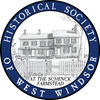Year 225 Lecture #1: Ten Crucial Days
Watch Larry Kidder's lecture about the "Ten Crucial Days" that saved the American Revolution during some of its darkest hours! Play the video below to access the recording - the first of several dozen events planned for 2022 in celebration of our town's 225th birthday. Also check out more about Larry Kidder HERE.


